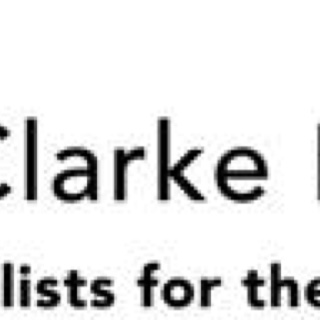Information
-
Month/Document No.
-
Audit Title
-
Client / Site
-
Conducted on
-
Prepared by
-
Elevation assessed & works completed.
-
Location
-
Personnel
Acceptance criteria/ Rules of Proper Workmanship 1. No work to be performed unless environmental conditions are as specified in therms of temperature, humidity and wind exposure. 2. Mixing time and proportions must be correct as per specification. 3. Safe systems of work must be enforced for working at height.
-
RULES OF WIR
Timetable:
1. All reports must be up to date.
2. Proper date and document number must be recorded on the cover page of the report.
3. Three days is maximum time over the date that the report must be in for , any date later than this will not be acceptable(timetable is available in the MClarke's reporting folder on the network).
4. All reports have to be updated directly on to "Project Reporting" folder on the network. -
Reporting Rules:
1. Project Managers need to monitor quality of work constantly and keep good records of their findings as Quality of works is of the upmost importance to our company.
2. Generally there should be reports prepared for each elevation, where all assessed levels are listed. Each single report may include more than one elevations. However it must be clearly described in the introduction which facades have been examined and what works have been completed during the assessment
3. When job is being handed over to the project manager/contract manager. Project manager must prepare a construction plan/drawing of the project, number each elevation and then refer to these numbers when conducting Work Inspections.
4. Construction plan layout drawings with numbered elevations must be saved onto the M Clarke’s Reporting folder on the network.
5. Each report should include in the Introduction (cover page of report) description of the assessed façade (assigned number) along with description of type of works which were completed and assessed by the Project Manager.
6. We have issued drawings reference numbers D01, D02, D03, D04, D05... These are available in “M Clarke’s Guidance Booklet", and need to be referred to throughout WIR and clearly show what is required.
7. The report with error/failure marked RED, must be saved on the system. The next report that will follow must show how the error was rectified. If improvement was not possible e.g. Due to soft ground/lack of access- it needs to be described/explained. The answer’s column still need to be highlighted Red.
However, if the error was rectified the section should be changed into green. The comment section is to be used for explanations of how and when the error was rectified.
8. If Project Manager has found an error during the assessment, it must be noted and fixed before consecutive stages of works progresses e.g. CP boarding cannot start before Metsec sub frame is properly fixed.
Quality Control Manager cannot accept the next WIR report until everything is fixed and up to date on the previous report, this is to make sure that all errors are corrected, and there is no error omissions.
9. All reports have to be send to a main contractor and subcontractors. -
Elevation assessed & works completed.
-
Completed by Subcontractors:
A. Pre-start checks.
-
1. Are conditions, access safe?<br>
-
Add media
-
2. Are materials properly stored?
-
Add media
-
3. Is substrate dry , clean and free from defects.?
Inspection results:
-
Add media
-
Signed off by Project Manager:
-
Signed off by Main Contractor representative.
Capping.
-
1. Have specified Cleats/support been fitted back to concrete and to SFS Metsec at approx. 600mm centres, and as per Metsec design?<br><br><br>
-
Add media
-
2. Has proper plywood been used.?<br><br>(Marine plywood or other with low content of moisture not more than 12% must be used in all location where there is a damp, condensation risk)<br>
-
Add media
-
3. Has 8mm thick CP wall sheating board been fitted to the SFS Metsec?, Were joints sealed with Dafa tape?
-
Add media
-
4. Have breather membrane been applied over entire face of the substrate. Has it been fully taped at vertical joints and intermittently at horizontal with Dafa tape?<br><br><br><br>
-
Add media
-
5. Have proprietary support brackets been fixed with 8 No. of Tek Screws(or similar) to metsec Cleat and plywood?<br>
-
Add media
-
6. Have brackets been fixed at 500 mm centres?<br>
-
Add media
-
7. Have proprietary support brackets been fixed with 4 No. Tapcon (or similar) screws into the concrete.?<br><br><br>
-
Add media
-
8. Have two JT3-LT3, 5.5 x 25mm (Ejot) fixings been used to secure bracket to the metsec trimmer?<br>
-
Add media
-
9. Has specified compriband (typically 3-6mm), been used at capping joint and at intermediate brackets? Has mastic seal been used at capping joint?<br><br>
-
Add media
-
10. Have specified colour codded Rivets been used at correct location to secure capping (see Engineers Layout Drawing)? <br>(*IT be remembered that fixings must be Marine compliant)<br>
-
Add media
-
11. Have Rivet fixings been oversized ? Has spacing tool been used in order to provide enough room for thermal expansion?<br>
-
Add media
-
12. Has one Rivet been missed at each 3m length of capping so as to allow room for thermal expansion?<br>
-
Add media
-
13. Are capping set to a consistent and even horizontal line ?<br>
-
Add media
Inspection Result
-
Add media
-
Signed off by Project Manager
-
Signed off by Main Contractor's representative.








